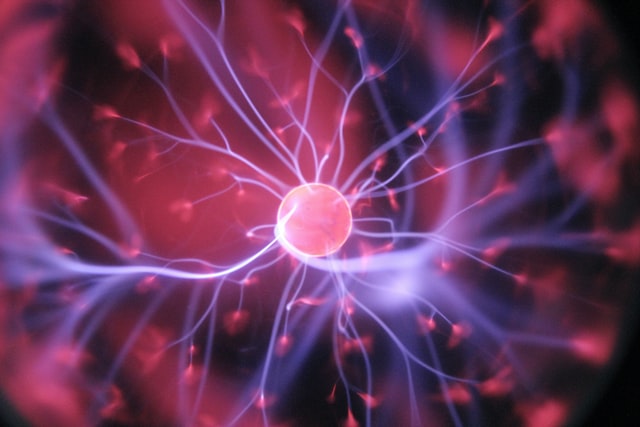
Students of all ages learn about the true history of atom discoveries through this age-appropriate nonfiction book. What were the major scientists who discovered the atom’s nature? Who were their friends or mentors?
By reading this, you can see how science evolved as each scientist built upon his or her knowledge.
Who Discovered Atom
Leucippus and Democritus
Leucippus and Democritus were Greek philosophers who are credited with coming up with the theory of atomism. This theory stated that everything is made up of tiny, indivisible particles called atoms.
Although they had similar ideas, it is believed that Democritus was the one who first came up with the term “atom.”
Atomism was a relatively new idea at the time, so it was not widely accepted by other philosophers.
In fact, Aristotle, one of the most famous philosophers of all time, disagreed with atomism and instead believed in the theory of elemental Earth, Air, Fire, and Water.
It wasn’t until many years later that atomism would start to gain more traction.
John Dalton
John Dalton was an English chemist and physicist who is best known for his work on atomic theory.
In the early 1800s, Dalton performed a series of experiments on gases that led him to believe that all matter is made up of atoms.
He also proposed that atoms are indivisible and indestructible and that they are different from each other based on their weight.
Dalton’s work was groundbreaking, but it was not without its critics. Some scientists did not believe that atoms were real, and others thought that Dalton’s atomic theory was incomplete.
Nevertheless, Dalton’s work laid the foundation for future discoveries about the nature
Ernest Rutherford
Ernest Rutherford was a New Zealand-born physicist who is best known for his work on the structure of atoms. In the early 1900s, Rutherford performed a series of experiments in which he fired alpha particles at a sheet of gold foil.
He expected the alpha particles to simply pass through the foil, but to his surprise, some of them were deflected.
Rutherford realized that the gold foil must be made up of tiny particles that were densely packed together. He also concluded that atoms must have a small, dense nucleus with electrons orbiting around it.
This model of the atom, which is sometimes called the Rutherford model, is still used today.
J.J. Thomson
J.J. Thomson was an English physicist who discovered the electron in 1897. Prior to Thomson’s discovery, it was thought that atoms were indivisible units of matter. However, Thomson’s experiments showed that atoms are actually made up of smaller particles. He concluded that atoms must have a small, central nucleus with electrons orbiting around it.
Thomson’s model of the atom was later refined by other scientists, but his discovery of the electron was an important step in the development of atomic theory.
Niels Bohr
Niels Bohr was a Danish physicist who made several important contributions to the field of atomic physics.
In 1913, he proposed a model of the atom that differed from Rutherford’s in one key way: he said that electrons orbit the nucleus at specific distances and can only occupy certain energy levels.
Bohr’s model of the atom was able to explain the spectral lines of hydrogen, which had puzzled scientists for many years.
It also helped to pave the way for the development of quantum mechanics, a branch of physics that studies the behavior of matter on a subatomic level.
Max Planck, Einstein, and other revolutionaries
Max Planck, Einstein, and other revolutionaries of quantum mechanics and relativity changed the way we think about atoms forever.
In the early 1900s, these scientists developed theories that showed that atoms are not indestructible particles; instead, they are made up of smaller subatomic particles.
They also showed that the behavior of matter on a subatomic level is governed by the laws of quantum mechanics, which are very different from the laws of classical physics.
Erwin Schrodinger and Werner Heisenberg
Erwin Schrodinger and Werner Heisenberg were two of the most important physicists of the 20th century. They both made major contributions to the field of quantum mechanics.
In particular, they developed a theory known as matrix mechanics, which is a mathematical approach to describing the behavior of subatomic particles.
Schrodinger and Heisenberg’s work had a major impact on the development of atomic theory. It showed that the behavior of subatomic particles is governed by the laws of quantum mechanics, which are very different from the laws of classical physics.
- Read also: The History of How DNA Discovered
- Read also: What exactly is dark energy, and how did scientists first identify it

Takeaway
The history of atom discoveries is a fascinating story of brilliant scientists. The discovery of the subatomic world has led to a greater understanding of the universe and the laws that govern it.
It has also had a major impact on the way we live our lives, from the technology we use to the medicine we take.
The study of atoms is an ongoing process, and scientists are constantly making new discoveries about these tiny particles and the role they play in the universe.
Today, we know that atoms are made up of protons, neutrons, and electrons. These particles are held together by the strong force, which is a fundamental force of nature.
The strong force is responsible for the stability of atoms and the structure of matter.
The discovery of the subatomic world has led to a greater understanding of the universe and the laws that govern it. It has also had a major impact on the way we live our lives, from the technology we use to the medicine we take.
The study of atoms is an ongoing process, and scientists are constantly making new discoveries about these tiny particles and the role they play in the universe.







